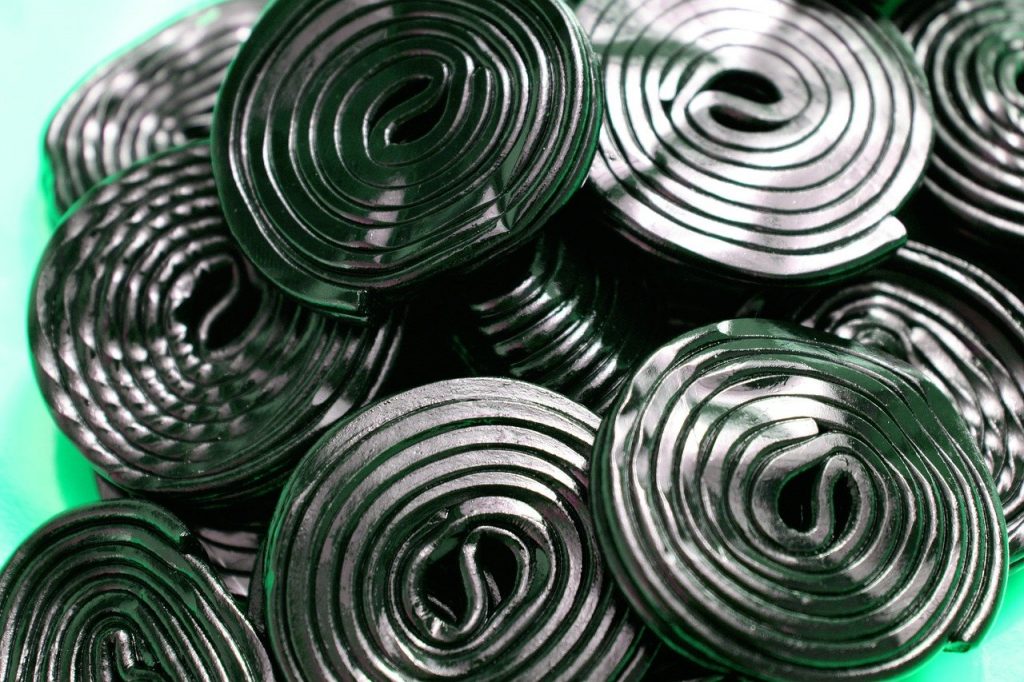All fields are required
Posted in Our Blog,Outbreaks & Recalls on June 13, 2021

The FDA warns, eating as little as 2 ounces of black licorice a day for two weeks could cause an irregular heart rhythm or arrhythmia, especially for folks over 40. The glycyrrhizin acid, found in black licorice and many other foods and dietary supplements containing licorice root extract, can cause dangerously low potassium and imbalances in other minerals called electrolytes. If, like me, you’re not a fan of black licorice, you’re in the clear. If, like some, you enjoy the sickly-sweet taste, watch out! Recently, a Massachusetts construction worker’s love of black licorice wound up costing him his life. Here’s more on Black Licorice Death.
Glycyrrhizin is a sweetening compound derived from licorice root. It can cause potassium levels in the body to fall. When that happens, some people experience abnormal heart rhythms, as well as high blood pressure, edema (swelling), lethargy, and congestive heart failure. According to Dr. Neel Butala, a cardiologist at Massachusetts General Hospital, the FDA permits up to 3.1% of a food’s content to have glycyrrhizin acid, but many candies and other licorice products don’t reveal how much of it is contained per ounce. Doctors have reported the case to the FDA in hope of raising attention to the risk. Dr. Butala further stated that, “Even a small amount of licorice you eat can increase your blood pressure a little bit.” Potassium levels are usually restored with no permanent health problems when consumption of black licorice stops.
The 54-year-old construction worker, with a love for black licorice, died after his heart stopped. After collapsing at lunch, doctors found that he had dangerously low potassium, which led to heart rhythm and other problems. It was reported that, the bag and a half of black licorice he ate every day for a few weeks, threw his nutrients out of whack and caused his heart to stop. A few weeks before his death last year, the man had switched from his usual red, fruit flavored twists to the black licorice version of the candy. Clearly his death was an extreme case. Despite that, this only further justifies my great distaste for licorice and all things licorice flavor.
According to a survey, conducted by The Candy Store, of 40,000 people to find out the most hated Halloween candies, licorice was ranked number 8 out of 11. Other candy on the list includes Good & Plenty (which is also a licorice candy), Mary Janes, Bit O’ Honey, and at number 1, Circus Peanuts. I am in full agreement with this list. It’s a hard pass for me on all of the above. No thank you. While the Candy Store blog post indicated that licorice does not include Twizzlers, any other licorice is on the chopping block at Halloween they say.
Licorice is a low-growing shrub mostly grown for commercial use in Greece, Turkey, and Asia. The National Institutes of Health (NIH) says the plant’s root has a long history of use as a folk or traditional remedy in both Eastern and Western medicine. It has been used as a treatment for heartburn, stomach ulcers, bronchitis, sore throat, cough and some infections caused by viruses, such as hepatitis; however, NIH says there are insufficient data available to determine if licorice is effective in treating any medical condition. Licorice is also used as a flavoring in food. Many “licorice” or “licorice flavor” products manufactured in the United States do not contain any licorice. Instead, they contain anise oil, which has the same smell and taste.
According to Jeff Beckman, a spokesman for the Hershey company, which makes the popular Twizzlers licorice twists, stated that “all of our products are safe to eat and formulated in full compliance with the FDA regulations,” and that all foods, including candy, “Should be enjoyed in moderation.” Just thinking about that black licorice flavor makes my stomach hurt. A lot of other foods and beverages including, jelly beans, licorice teas, and even some beers contain the glycyrrhizin compound. The FDA website states that, when potassium levels fall due to regular ingestion of the compound, some people experience abnormal heart rhythms, as well as high blood pressure, edema (swelling), lethargy, and congestive heart failure. As it turns out, you really can overdose on candy—or, more precisely, black licorice.
The FDA offers this advice for those with a fondness for black licorice; No matter what your age, don’t eat large amounts of black licorice at one time. If you have been eating a lot of black licorice and have an irregular heart rhythm or muscle weakness, stop eating it immediately and contact your healthcare provider. Additionally, black licorice can interact with some medications, herbs and dietary supplements. Consult a health care professional if you have qu3estions about possible interactions with a drug or supplement you may be taking. The FDA has a consumer complaint coordinator in your area. If you have experienced any problems after eating licorice, click here to get in contact with your local consumer complaint coordinator. If you’d like my advice, just don’t eat it, it’s gross. Just say no.
By: Michelle Galadik